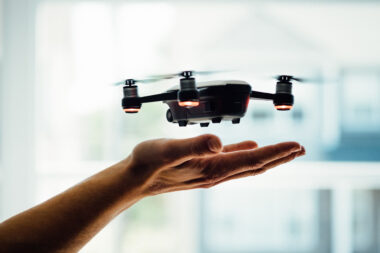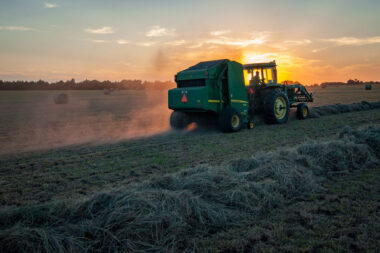Unmanned Underwater Vehicles (UUVs), also known as underwater drones or autonomous underwater vehicles (AUVs), are robotic devices designed to operate underwater without direct human intervention. These vehicles are used for a variety of applications, ranging from scientific research to military and commercial purposes. UUVs are equipped with sensors, propulsion systems, and communication devices that allow them to navigate and collect data beneath the water’s surface.
Autonomous Operation:
- Navigation Systems:
- Inertial Navigation Systems (INS): AUVs often use inertial sensors such as accelerometers and gyroscopes to measure changes in velocity and orientation, allowing for precise navigation.
- Doppler Velocity Log (DVL): DVL measures the vehicle’s velocity relative to the seafloor, aiding in dead reckoning navigation.
- Pressure Sensors: Depth sensors calculate the AUV’s position based on water pressure changes at different depths.
- Waypoint Navigation:
- AUVs follow predefined waypoints using algorithms that combine data from various sensors to adjust course and maintain the desired trajectory.
- Obstacle Avoidance:
- Sonar Systems: Forward-looking and obstacle-avoidance Sonar systems provide real-time mapping of the underwater environment, helping the AUV navigate around obstacles.
- Collision Detection:
- Sophisticated algorithms process sensor data to detect potential collisions and trigger evasive maneuvers or course corrections.
- Mission Planning:
- Autonomous mission planning involves algorithms that optimize routes, considering factors such as energy efficiency, data collection objectives, and environmental conditions.
Sensors:
- Sonar Systems:
- Multibeam Sonar: Provides high-resolution mapping of the seafloor and objects in the water column.
- Side-Scan Sonar: Produces detailed images of the seafloor for geological and archaeological studies.
- Obstacle Avoidance Sonar: Detects objects in the AUV’s path to prevent collisions.
- Cameras:
- Visible Light Cameras: Capture images for visual inspection and documentation.
- Infrared Cameras: Used in low-light conditions or for detecting temperature variations in the water.
- Environmental Sensors:
- Conductivity, Temperature, and Depth (CTD) Sensors: Measure water properties for oceanographic research.
- Chemical Sensors: Detect pollutants or changes in water chemistry.
- Communication Sensors:
- Acoustic Modems: Enable communication with other underwater vehicles or surface stations through acoustic signals.
Propulsion System:
- Thruster Types:
- Electric Thrusters: Commonly used in AUVs, electric thrusters convert electrical energy from batteries into propulsive thrust.
- Pump-Jet Propulsion: Utilizes a pump to draw in water and expel it at high velocity, providing propulsion.
- Energy Storage:
- Lithium-Ion Batteries: Provide a high energy density for extended mission durations.
- Fuel Cells: Some AUVs use hydrogen fuel cells for longer missions, generating electricity through the reaction of hydrogen and oxygen.
- Propulsion Control:
- Algorithms that control propulsion systems adjust thruster speed and direction to maintain desired velocities and headings.
Communication Systems:
- Acoustic Communication:
- Underwater Acoustic Modems: Transmit data through acoustic signals, allowing communication between AUVs or with surface stations.
- Surface Communication:
- RF Communication: AUVs at the surface communicate with operators using radio-frequency (RF) signals.
- Data Transmission:
- Data Logger Systems: Store collected data for later retrieval or transmit it in real-time to operators.
- Error-Correction Algorithms: Ensure accurate and reliable data transmission in challenging underwater communication environments.
- Autonomous Data Processing:
- AUVs are equipped with onboard processors to analyze sensor data, make decisions autonomously, and compress or filter data for efficient transmission.
- Mission Control Systems:
- Ground control systems use communication protocols to send commands, receive data, and monitor the AUV’s status during autonomous missions.
Integration and Control:
- Central Processing Unit (CPU):
- AUVs feature CPUs that manage sensor data, navigation algorithms, and overall vehicle control.
- Sensor Fusion:
- Algorithms fuse data from multiple sensors to create a comprehensive situational awareness picture, improving navigation accuracy and decision-making.
- Autonomous Decision-Making:
- Rule-based systems and artificial intelligence algorithms enable AUVs to make decisions based on mission objectives, sensor input, and environmental conditions.
- Redundancy Systems:
- To enhance reliability, AUVs often incorporate redundant sensors, thrusters, and communication systems to mitigate the impact of component failures.
- Remote Operation:
- AUVs can switch between autonomous and remotely operated modes, allowing human operators to intervene, modify mission parameters, or control the vehicle directly.
Algorithms that control propulsion systems
PID Control (Proportional-Integral-Derivative):
- Purpose: PID control is widely used for maintaining desired trajectories and headings.
- Functionality: The algorithm continuously adjusts thruster speeds based on the difference between the desired and actual values. It considers proportional, integral, and derivative terms to achieve stable and precise control.
Model Predictive Control (MPC):
- Purpose: MPC optimizes control inputs over a prediction horizon, considering the dynamic model of the AUV and the mission objectives.
- Functionality: By predicting the future behavior of the AUV and optimizing control inputs, MPC improves trajectory tracking and enables the vehicle to adapt to varying environmental conditions.
LQR Control (Linear Quadratic Regulator):
- Purpose: LQR control is used for optimal control of linear dynamic systems.
- Functionality: It designs a state feedback controller to minimize a cost function, providing optimal control inputs for the AUV’s linearized dynamics.
Adaptive Control:
- Purpose: Adaptive control algorithms adjust the control parameters in real-time to accommodate changes in the AUV’s dynamics or operating conditions.
- Functionality: These algorithms use adaptive mechanisms to continuously update control parameters, enhancing the AUV’s performance under varying circumstances.
Backstepping Control:
- Purpose: Backstepping control is designed for nonlinear systems and is used to stabilize the AUV.
- Functionality: The algorithm decomposes the control problem into multiple steps, allowing the AUV to handle nonlinearities and achieve stable control.
Sliding Mode Control:
- Purpose: Sliding mode control is used for robust control in the presence of uncertainties and disturbances.
- Functionality: The algorithm creates a sliding surface, and the AUV’s dynamics are constrained to this surface, providing robustness against external disturbances.
Neural Network-Based Control:
- Purpose: Neural networks are used for learning-based control in AUVs.
- Functionality: Neural networks can learn the mapping between sensor inputs and optimal control actions, allowing for adaptive control and improved performance.
Fuzzy Logic Control:
- Purpose: Fuzzy logic controllers provide a rule-based approach to handle uncertainties and imprecise information.
- Functionality: Fuzzy logic controllers use linguistic rules to map sensor inputs to control actions, providing a flexible and adaptive control strategy.
Reinforcement Learning:
- Purpose: Reinforcement learning algorithms enable AUVs to learn optimal control policies through trial and error.
- Functionality: The AUV explores its environment, receives feedback, and adjusts its control strategy to maximize a reward signal, ultimately learning efficient propulsion control.
Nonlinear Model Predictive Control (NMPC):
- Purpose: NMPC extends MPC to handle nonlinear systems.
- Functionality: It optimizes control inputs over a prediction horizon, considering the nonlinear dynamics of the AUV, leading to improved performance in challenging environments.
Conclusion
Unmanned Underwater Vehicles play a crucial role in advancing our understanding of the oceans, supporting various industries, and performing tasks that are challenging or hazardous for humans. Their ability to operate autonomously or be remotely controlled makes them valuable tools for exploring and monitoring the underwater world.



